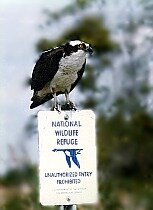|
This site is currently under development, please be patient while this page is being written.
| GRADE 9 - 12 |
| LIFE SCIENCE BODY OF KNOWLEDGE |
|
Standard 15: Diversity and Evolution of Living Organisms
A. The scientific theory of evolution is the fundamental concept underlying all of biology.
B. The scientific theory of evolution is supported by multiple forms of scientific evidence.
C. Organisms are classified based on their evolutionary history.
D. Natural selection is a primary mechanism leading to evolutionary change.
|
| |
BENCHMARK CODE |
BENCHMARK |
| * |
SC.912.L.15.1 |
Explain how the scientific theory of evolution is supported by the fossil record, comparative anatomy, comparative embryology, biogeography, molecular biology, and observed evolutionary change. |
| |
| |
SC.912.L.15.2 |
Discuss the use of molecular clocks to estimate how long ago various groups of organisms diverged evolutionarily from one another. |
| |
| |
SC.912.L.15.3 |
Describe how biological diversity is increased by the origin of new species and how it is decreased by the natural process of extinction. |
| |
| * |
SC.912.L.15.4 |
Describe how and why organisms are hierarchically classified and based on evolutionary relationships. |
| |
| |
SC.912.L.15.5 |
Explain the reasons for changes in how organisms are classified. |
| |
| * |
SC.912.L.15.6 |
Discuss distinguishing characteristics of the domains and kingdoms of living organisms. |
| |
| |
SC.912.L.15.7 |
Discuss distinguishing characteristics of vertebrate and representative invertebrate phyla, and chordate classes using typical examples. |
| |
| * |
SC.912.L.15.8 |
Describe the scientific explanations of the origin of life on Earth. |
| |
| |
SC.912.L.15.9 |
Explain the role of reproductive isolation in the process of speciation. |
| |
| * |
SC.912.L.15.10 |
Identify basic trends in hominid evolution from early ancestors six million years ago to modern humans, including brain size, jaw size, language, and manufacture of tools. |
| |
| |
SC.912.L.15.11 |
Discuss specific fossil hominids and what they show about human evolution. |
| |
| |
SC.912.L.15.12 |
List the conditions for Hardy-Weinberg equilibrium in a population and why these conditions are not likely to appear in nature. Use the Hardy-Weinberg equation to predict genotypes in a population from observed phenotypes. |
| |
| * |
SC.912.L.15.13 |
Describe the conditions required for natural selection, including: overproduction of offspring, inherited variation, and the struggle to survive, which result in differential reproductive success. |
| |
| * |
SC.912.L.15.14 |
Discuss mechanisms of evolutionary change other than natural selection such as genetic drift and gene flow. |
| |
| * |
SC.912.L.15.15 |
Describe how mutation and genetic recombination increase genetic variation. |
| |
|
|
| News and Views |

|
|
News Items
|
|
November 30, 2013
On environment, shortsightedness costs Florida big.
Scott Maxwell, Taking Names.
read more
|
|
October 9, 2013
Fuel Cell Today analysis.
The Fuel Cell Industry Review 2013.
read more
|
|
September 25, 2013
Fuel Cell Today analysis.
The Potential for Fuel Cell Prime Power in Japan.
read more
|
|
August 1, 2013
Duke Energy to cancel proposed Levy County nuclear plant.
read more
|
|
May 22, 2013
Fuel Cell Today analysis.
Electrolysers for Renewable Energy Efficiency.
read more
|
|
March 13, 2013
Beyond Electricity: Using Renewables Effectively.
read more
|
|
September 24, 2012
Sewer Systems Legal Filing.
read more
|
|
February 1, 2012
Fuel Cell Today update.
read more
|
|
January 13, 2012
Sewer Agenda.
read more
|
|
December 23, 2011
Scientist: Water account overdrawn.
read more
|
|
Novemver 14, 2011
Submission to the Citrus County Commissioner, 14 November, 2011.
read more
|
|
|